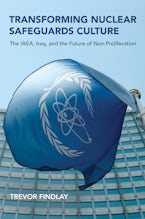A concise and accessible explanation of the science and technology behind the domestication of nuclear fusion energy.
Nuclear fusion research tells us that the Sun uses one gram of hydrogen to make as much energy as can be obtained by burning eight tons of petroleum. If nuclear fusion—the process that makes the stars shine—could be domesticated for commercial energy production, the world would gain an inexhaustible source of energy that neither depletes natural resources nor produces greenhouse gases. In Star Power, Alan Bécoulet offers a concise and accessible primer on fusion energy, explaining the science and technology of nuclear fusion and describing the massive international scientific effort to achieve commercially viable fusion energy.
Bécoulet draws on his work as Head of Engineering at ITER (International Thermonuclear Experimental Reactor) to explain how scientists are trying to “put the sun in a box.” He surveys the history of nuclear power, beginning with post–World War II efforts to use atoms for peaceful purposes, and describes how energy is derived from fusion, explaining that the essential principle of fusion is based on the capacity of nucleons (protons and neutrons) to assemble and form structures (atomic nuclei) in spite of electrical repulsion between protons, which all have a positive charge. He traces the evolution of fusion research and development, mapping the generation of electric current though fusion.
The ITER project marks a giant step in the development of fusion energy, with the potential to demonstrate the feasibility of a nuclear fusion reactor. Star Power offers an introduction to what may be the future of energy production.











